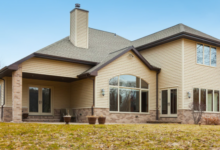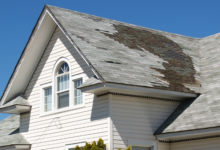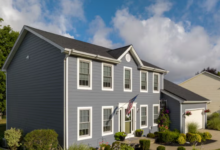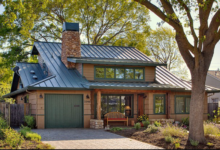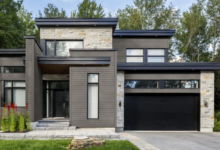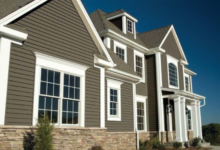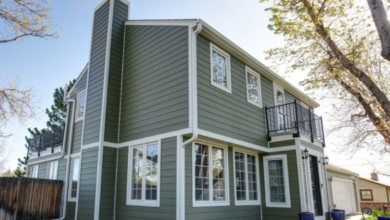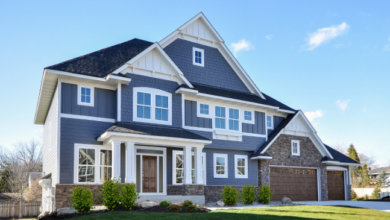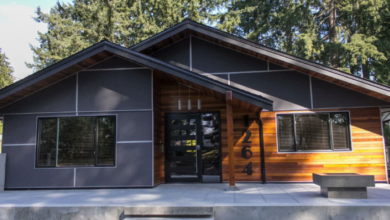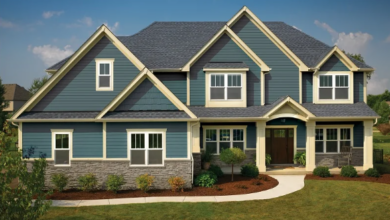Energy-Efficient Siding Options: Enhance Your Home’s Aesthetics
Energy-Efficient Siding Options – Discover top energy-efficient siding options to reduce energy costs and elevate your home’s curb appeal. Learn about benefits, product comparisons, and where to buy.
Transform Your Home with Energy-Efficient Siding Options
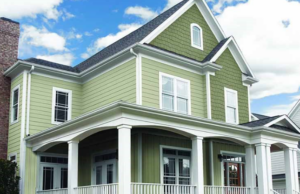
Choosing the right siding for your home is more than just an aesthetic decision; it’s a crucial factor in enhancing energy efficiency, reducing utility costs, and increasing property value. In this comprehensive guide, we’ll explore the top energy-efficient siding options, their benefits, real-world product examples, and provide actionable insights to help you make an informed decision.
Why Energy-Efficient Siding Matters
Energy-efficient siding is more than just a trendy upgrade; it’s a practical investment that yields significant long-term benefits for homeowners. Here’s a breakdown of why it matters:
1. Reduced Energy Consumption and Costs:
- Insulation:
- Energy-efficient siding, particularly insulated vinyl or metal siding, acts as a thermal barrier, reducing heat transfer through your home’s walls.
- This translates to lower heating costs in the winter and reduced cooling costs in the summer.
- Reflective Properties:
- Reflective siding, especially metal options, deflects sunlight and minimizes heat absorption, keeping your home cooler in hot climates.
- This reduces the strain on your air conditioning system and lowers energy bills.
2. Enhanced Indoor Comfort:
- Consistent Temperatures:
- Energy-efficient siding helps maintain consistent indoor temperatures, eliminating drafts and cold spots.
- This creates a more comfortable and enjoyable living environment.
- Noise Reduction:
- Insulated siding can also provide some level of soundproofing, reducing outside noise and creating a quieter indoor space.
3. Environmental Benefits:
- Lower Carbon Footprint:
- By reducing energy consumption, energy-efficient siding helps lower your home’s carbon footprint.
- This contributes to a more sustainable and environmentally friendly lifestyle.
- Reduced Greenhouse Gas Emissions:
- Lower energy consumption translates to reduced greenhouse gas emissions from power plants.
4. Increased Home Value:
- Attractive Feature:
- Energy-efficient upgrades are highly desirable to potential homebuyers.
- Installing energy-efficient siding can increase your home’s resale value and make it more attractive to buyers.
- Long-Term Investment:
- While the initial cost of energy-efficient siding may be higher, the long-term energy savings and increased home value make it a worthwhile investment.
5. Protection and Durability:
- Weather Resistance:
- Energy-efficient siding is often designed to withstand harsh weather conditions, providing superior protection against rain, wind, and sun.
- This helps extend the lifespan of your home’s exterior.
- Moisture Control:
- Properly installed energy-efficient siding can prevent moisture infiltration, reducing the risk of mold growth and structural damage.
6. Government Incentives and Rebates:
- Potential Savings:
- Some local and federal programs offer incentives and rebates for energy-efficient home improvements.
- Check with your local utility company or government agencies for available programs.
In summary, energy-efficient siding is a smart investment that not only saves you money on energy bills but also enhances your home’s comfort, value, and environmental impact.
Top Energy-Efficient Siding Materials
Here are some of the leading energy-efficient siding materials to consider:
1. Insulated Vinyl Siding
Insulated vinyl siding features a layer of foam insulation attached to traditional vinyl, offering improved thermal performance.
- R-Value: Typically ranges from 2.0 to 3.5.
- Benefits: Low maintenance, moisture-resistant, and available in various styles and colors.
- Considerations: Slightly higher cost than standard vinyl but offset by energy savings.
2. Fiber Cement Siding
Composed of cement, sand, and cellulose fibers, fiber cement siding is known for its durability and energy efficiency.
- R-Value: Approximately 0.5; however, when paired with exterior insulation, it significantly improves.
- Benefits: Fire-resistant, withstands harsh weather, and mimics the appearance of wood without the associated maintenance.
- Considerations: Heavier material requiring professional installation.
3. Engineered Wood Siding
Engineered wood siding offers the aesthetic appeal of natural wood with enhanced durability and energy efficiency.
- R-Value: Around 0.6 to 0.8; can be increased with additional insulation.
- Benefits: Resistant to pests and rot, lighter than fiber cement, and eco-friendly due to sustainable manufacturing processes.
- Considerations: Requires periodic maintenance to preserve appearance.
4. Stucco Siding
Traditional stucco siding, made from cement, sand, and lime, offers natural insulating properties.
- R-Value: Approximately 0.2; enhanced when applied over insulating materials.
- Benefits: Fire-resistant, durable, and offers a unique textured appearance.
- Considerations: Best suited for dry climates; may require maintenance in wetter regions.
5. Steel Siding
Steel siding is a durable and energy-efficient option, especially when paired with proper insulation.
- R-Value: Around 0.6; can be improved with insulated backing.
- Benefits: Fire-resistant, low maintenance, and recyclable.
- Considerations: Can be prone to dents and may require repainting over time.
Real-World Product Examples
To assist in your decision-making process, here are some top-rated energy-efficient siding products:
1. James Hardie Insulated Fiber Cement Siding
James Hardie offers fiber cement siding with an added layer of insulation, enhancing its thermal performance.
- Features: Durable, fire-resistant, and available in various styles and colors.
- Pros: Low maintenance, long lifespan, and excellent energy efficiency.
- Cons: Higher initial cost and requires professional installation.
- Price: Approximately $10 to $14 per square foot installed.
- Where to Buy: James Hardie Official Website
2. LP SmartSide Insulated Lap Siding
LP SmartSide offers engineered wood siding with an insulated backing, providing enhanced energy efficiency.
- Features: Treated wood strands for durability, resistance to pests, and a realistic wood appearance.
- Pros: Lightweight, easy to install, and eco-friendly.
- Cons: Requires periodic maintenance and painting.
- Price: Approximately $9 to $12 per square foot installed.
- Where to Buy: LP Building Solutions
3. Alside Prodigy Insulated Vinyl Siding
Alside’s Prodigy line features insulated vinyl siding designed for superior energy efficiency.
- Features: Thick insulation, seamless appearance, and available in various colors.
- Pros: Low maintenance, moisture-resistant, and cost-effective.
- Cons: Limited impact resistance compared to other materials.
- Price: Approximately $8 to $10 per square foot installed.
- Where to Buy: Alside Prodigy Siding
Comparison Table of Energy-Efficient Siding Options
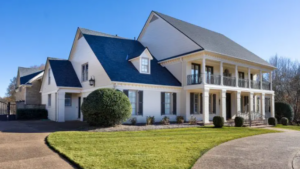
| Siding Material | R-Value | Pros | Cons | Price (Installed) |
|---|---|---|---|---|
| Insulated Vinyl Siding | 2.0-3.5 | Low maintenance, moisture-resistant, affordable | Limited color options | $8-$10 per sq. ft. |
| Fiber Cement Siding | ~0.5* | Durable, fire-resistant, wood-like appearance | Heavier, higher installation cost | $10-$14 per sq. ft. |
| Engineered Wood Siding | 0.6-0.8 | Eco-friendly, pest-resistant, authentic wood look | Requires periodic maintenance | $9-$12 per sq. ft. |
| Stucco Siding | ~0.2* | Fire-resistant, durable, unique texture | Best for dry climates | $7-$9 per sq. ft. |
| Steel Siding | ~0.6* | Fire-resistant, low maintenance, recyclable | Prone to dents | $10-$15 per sq. ft. |
